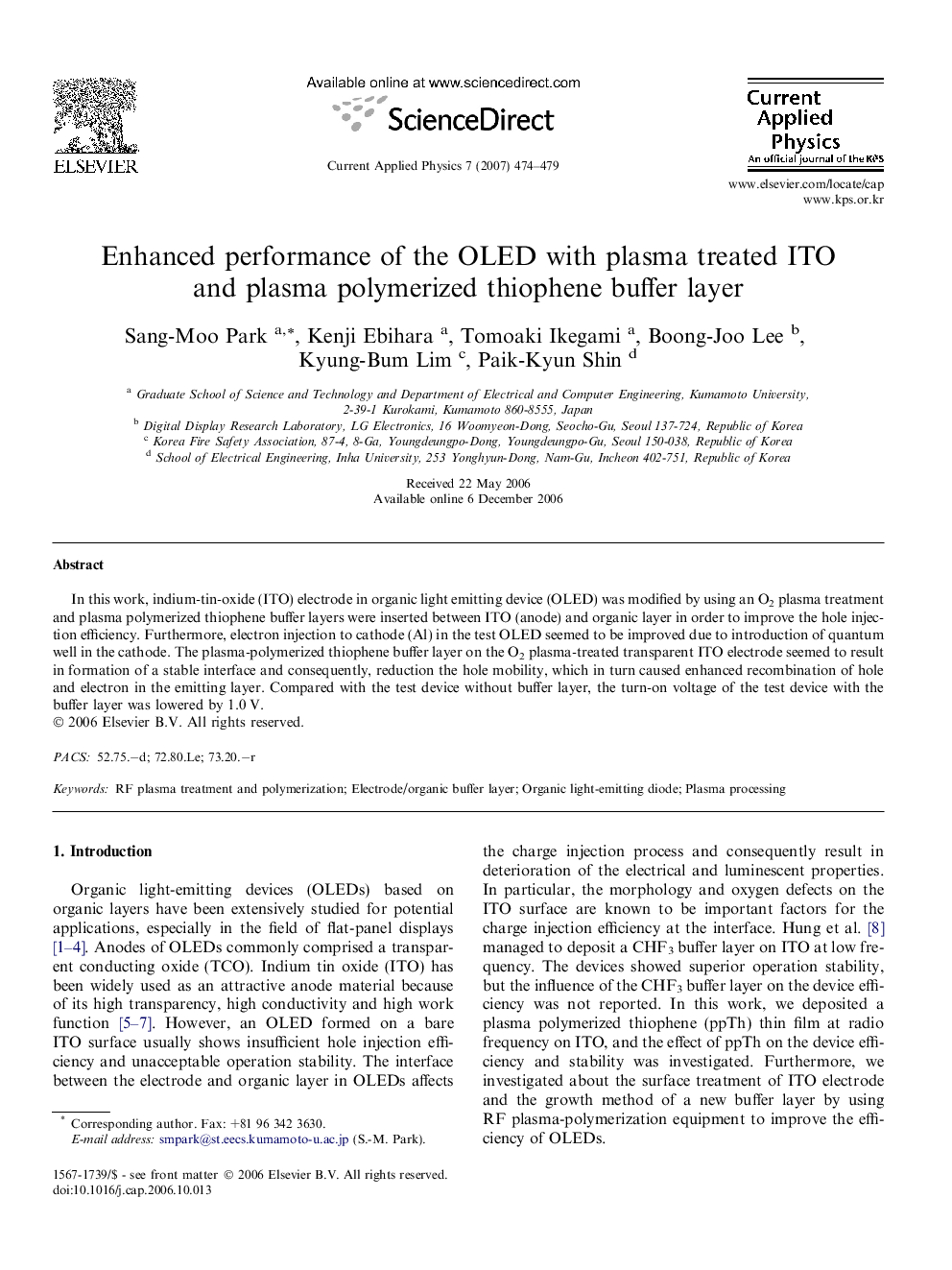| Article ID | Journal | Published Year | Pages | File Type |
|---|---|---|---|---|
| 1787429 | Current Applied Physics | 2007 | 6 Pages |
Abstract
In this work, indium-tin-oxide (ITO) electrode in organic light emitting device (OLED) was modified by using an O2 plasma treatment and plasma polymerized thiophene buffer layers were inserted between ITO (anode) and organic layer in order to improve the hole injection efficiency. Furthermore, electron injection to cathode (Al) in the test OLED seemed to be improved due to introduction of quantum well in the cathode. The plasma-polymerized thiophene buffer layer on the O2 plasma-treated transparent ITO electrode seemed to result in formation of a stable interface and consequently, reduction the hole mobility, which in turn caused enhanced recombination of hole and electron in the emitting layer. Compared with the test device without buffer layer, the turn-on voltage of the test device with the buffer layer was lowered by 1.0Â V.
Related Topics
Physical Sciences and Engineering
Physics and Astronomy
Condensed Matter Physics
Authors
Sang-Moo Park, Kenji Ebihara, Tomoaki Ikegami, Boong-Joo Lee, Kyung-Bum Lim, Paik-Kyun Shin,
